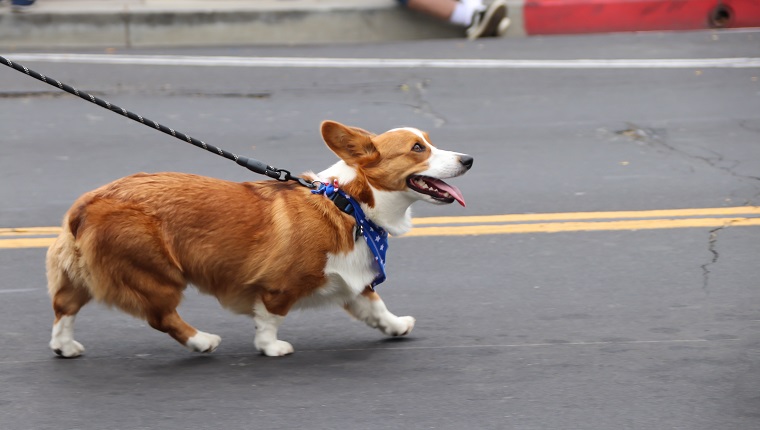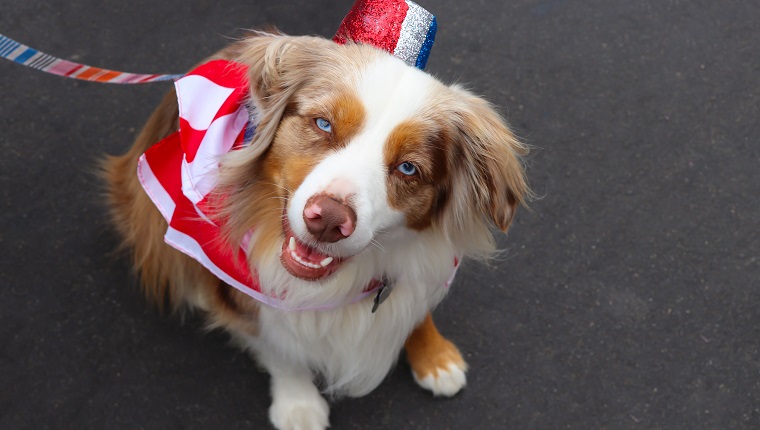It’s that time of year again for fireworks, backyard barbecues, and Americana clothing emblazoned with red, white, and blue. Yes, the 4th of July holiday looms, as well as the possibility your pet will suffer stress, trauma, or illness associated with the festivities.
How can your pet catch a break and stay healthy? You, the responsible caretaker, must educate yourself on the holiday’s hazards and proactively prepare to protect your pet in every conceivable environment.
Here are my top five July 4th holiday pet safety tips!
1. Practice Firework Safety
Restrict your pet’s access to the immediate or adjacent area where fireworks are being set off. Also, keep your pet indoors in a quiet, cool, isolated part of your home.
Put on your pet’s favorite television program — Animal Planet anyone? — or play music to further mask firework sounds.
If needed, confine your pet to a comfortable crate to prevent them from escaping through open doors, lunging at windows, or eating inappropriate materials, which all can occur as manifestations of anxiety.
2. Tire Out Your Pet For Better Behavior

Participate in appropriate exercise with your pet in the hours leading up to a 4th of July event.
An adequately fatigued pet has a greater physiologic need to seek rest during your celebration and is less likely to exhibit anxious behaviors.
3. Promote Calmness With Natural Products Or Medications
Give your pet a dose of a safe, over-the-counter, stress-relieving product, such as Rescue Remedy Pet, one to two hours before a potentially distressing event.
If Rescue Remedy doesn’t provide sufficient calming, then ask your veterinarian to prescribe an appropriate sedative or anxiety relieving medication.
Acepromazine is a commonly used animal sedative, yet it does not have anxiolytic (anxiety relieving) properties. Alprazolam, commonly known as Xanax, is an anxiolytic and mild sedative.
4. Be Cautious With Festive Pet Adornments

Like Halloween, 4th of July holiday costumes are not necessarily accepted by all pets. Obviously, you should never force your pet to wear a costume if they resist your attempts at playing dress up.
Even if your pet readily accepts decoration, don’t leave them unobserved, as fabrics can uncomfortably constrict tissue, get caught in body parts, like the mouth or legs, or be ingested upon your pet’s attempted removal.
5. Avoid Dietary Indiscretion
Summertime gatherings generally lend to the preparation of festive foods on which people feel compelled to gorge themselves as a representation of their American pride. Unfortunately, our pets are of similar minds and will also readily dive into a plate of celebratory foods.
However, permitting your pet to partake in holiday appetizers, main courses, or desserts can alter their normal feeding patterns and cause digestive imbalances.
Additionally, keep all trash completely inaccessible to your pet’s snooping snout. Potentially life threatening illness can ensue should your pet engage in some holiday dietary indiscretion.
How are you keeping your dog safe this Independence Day? Do you have any tips for keeping pets calm? Then let us know in the comments below!
Dr. Mahaney graduated from the University of Pennsylvania School of Veterinary Medicine and is also a Certified Veterinary Journalist and Holistic Housecall Veterinarian. He lives and practices in Los Angeles, California, and works closely with local rescue organizations.
Click the bold links in the article to shop for your dog and support our content!




